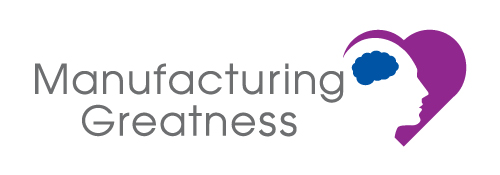How to Harness the Power of 360-Degree Feedback
My friend Brian Houp and I might support different football teams, but in the years since we first met at a class through the Center for Executive Coaching, we’ve found we have many things in common, including a love for great feedback! In his work as an executive coach, Brian is particularly passionate about 360-degree feedback. He recently joined me for an episode of my Mindfulness Manufacturing podcast to talk more about 360-degree feedback, why it’s important, and how leaders can harness the power of feedback to create actionable results.
What is 360-Degree Feedback?
360-degree feedback is a unique process where an individual receives confidential, anonymous feedback from others on their team or in their organization, like their peers, supervisors, or mangers. The feedback focuses on the individual and their behavior. It works to give them an in-depth understanding of how others in their organization see them. How we see ourselves is often very different from how others see us, and 360-degree feedback works to bridge the gap between how we see ourselves and how we show up to others.
Brian’s 360-Degree Feedback Tips
So how can leaders use this type of feedback to improve behavior in their organization? In the podcast episode, Brian shared some important tips.
1) Confidentiality is key
Since 360-degree means gathering information from many people in your organization, it’s important to prioritize confidentiality. When gathering information from others or putting together a feedback report, take out names or other identifying factors. This allows the person receiving the feedback to focus on just the feedback, rather than worrying about who said what about them.
2) Consider your wording
Design the questions in a way that will get concise, open-ended responses. For example, ask questions like “what do you think Dan could do differently when interacting with the team?” or “is there anything you think Rachel could do to form better connections with her clients?” If there is a specific issue that needs to be addressed, be sure to include it in the survey.
3) Find the best audience
Along with crafting your survey to get the strongest responses, you should also think about the best audience. For example, if you are particularly interested in learning on someone interacts with their peers, then be sure to interview people who work closely with them. You can also look outside your organization for the best survey answers, and might consider asking for feedback from clients, suppliers, and others who work with the person receiving the feedback. People show up differently for different people, so be sure to survey a wide range of people.
What Comes Next?
Once you’ve gathered 360-degree feedback and talk about it with your team members, it’s time to make sure feedback isn’t just a buzz word! After they’ve had some time to digest the feedback, talk with them about the best way to move forward, and what you can do to support them as they work to improve their behavior or how they show up.
Learn More on the Podcast
To hear more from Brian Houp, check out his episode of the Mindfulness Manufacturing podcast here.
At Manufacturing Greatness, Trevor Blondeel works with manufacturers to connect the top to the shop floor. If you’re ready to improve your own organization, contact Trevor to learn how Manufacturing Greatness can help you build stronger leaders and develop a dynamic, high-performing workplace.

